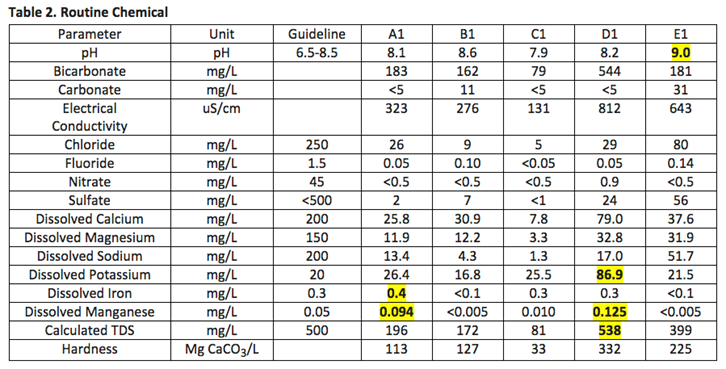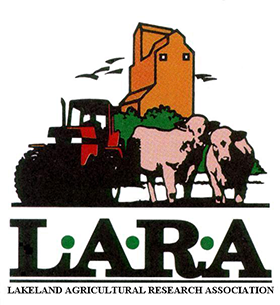2012 Dugout Testing
In the spring of 2012, five dugouts were tested for fecal coliforms and routine water analysis. The sampling was done to look for 1) differences between dugouts with and without cattle, and 2) whether or not alternative water sources were provided to the cattle or if they had direct access to water.
Read more about the details of the sampling and the results here
Characteristics of sampled dugouts
Site A1 is fenced off (2011) with cattle
Site B1 is approx 30 years old with no cattle
Site C1 is a Ducks Unlimited/LARA alternative water project, fenced with cattle
Site D1 is cattle with direct access
Site E1 is no cattle with aeration


- To interpret water quality analysis for livestock, click here.
- For livestock purposes, water having a pH greater than 8 is considered poor quality. However, surface waters in the region usually have a pH of around 8 due to parent soil materials.
- Total Dissolved Solids (TDS) is a measure of particles that are greater than 2 microns. Conductivity can be used to measure TDS. The aesthetic objective of TDS for human consumption is less than 500mg/L, but most groundwater TDS is around 1000 mg/L. High levels of TDS are associated with hardness, mineral deposition, corrosion, and poor taste. Calcium and magnesium contribute to the hardness of the water. Soft water ranges from 0-50 mg/L, moderately soft from 50-100 mg/L, moderately hard from 100-200 mg/L, hard from 200-400 mg/L, and very hard from 400-600 mg/L.
- Potassium is acceptable at rates under 20 mg/L, but may still be acceptable at higher levels depending on pH and alkalinity.
- Iron and manganese have a large effect on aesthetics of the water. Higher values increase discolouration, odour, and taste of the water and will decrease the amount of water consumed while also decreasing the productivity of livestock.

